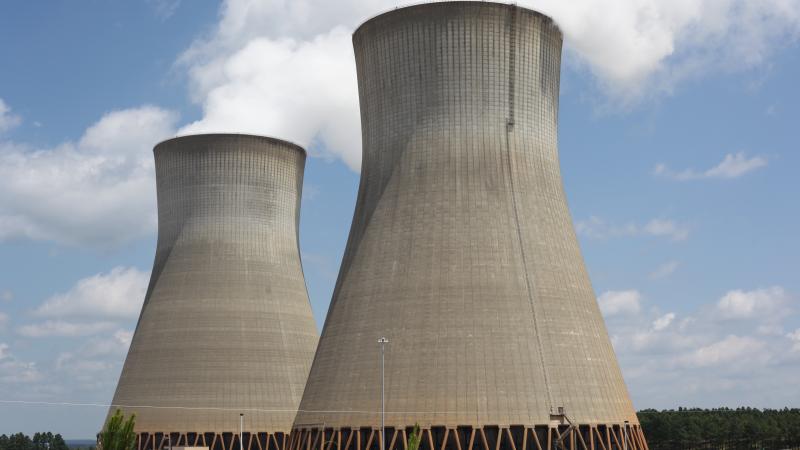Arbitrary tweaks to temperature data claiming ‘hottest day ever’ may be biased, faulty, experts say
Collecting temperature data isn't an exact science, and NOAA repeatedly adjusts the data, which the agency says improves its quality. Some experts are skeptical that the process isn't biased.
Every summer, as temperatures rise, the media repeatedly sends out a barrage of reports on “hottest day ever.” But a review of those claims show they may not be entirely accurate.
“Monday breaks the record for the hottest day ever on Earth,” the Associated Press reported this week. “Planet Sets Record for Hottest Day Twice in a Row,” The New York Times reported on the same day. The Washington Post ran its story with virtually the same headline as the Times. The Atlantic, NBC News and The Guardian all carried similar stories.
These claims are based entirely or in part on temperature datasets released by the National Oceanic and Atmospheric Administration (NOAA). Some experts say the accuracy of the data is questionable. The agency adjusts the data using a complex algorithm that it says improves the quality of the data — and there are some legitimate reasons for the adjustments — but NOAA isn’t entirely transparent as to why some station’s data has been altered. This makes it hard to examine if the adjustments are infecting the temperature trends with an agenda-driven bias.
Ghost stations
The U.S. Historical Climatology Network (USHCN) is an extensive network of reporting stations covering the contiguous U.S. It has data for many stations going back to the 1800s.
However, the number of stations within the network has declined over the past 30 years. In 1957, the network was composed of 1,218 stations. Certified consulting meteorologist John Shewchuk told Just the News that after 1990, due to the equipment aging and personnel retirements, the numbers began to decline. In 2020, there were only 830 stations left.
The data for each of these inactive stations is still contained with the USHCN data set, but the temperature is estimated based on surrounding stations. Shewchuk has been using satellite photos to identify the location of what he calls “ghost stations.” He’s located nearly 100 of them across the country so far.
Shewchuk posted a YouTube video that gives an example of how the data at the inactive stations is estimated. A station in Belle Glade, Florida, became inactive in 2005. Wherever there is missing raw data, NOAA estimates the temperature for that station and marks the temperature with an “E.” Since 2005, all the Belle Grade temperatures have been estimated.
“Years ago, when NOAA was serious about obtaining real weather data, they made the necessary effort to find new observers and replace equipment as needed. Now, with the fake climate crisis, they find it convenient to ignore the disappearing stations and fabricate the temperature data to better support the illusion of a climate crisis,” Shewchuk said.
Questionable data quality
Climate scientist Zeke Hausfather, who regularly advocates on X for the elimination of fossil fuels, explains in an article on Carbon Brief, that temperature stations move, the time of day readings are taken often fluctuate, some stations were transitioned from liquid-in-glass thermometers to electronic thermometers, and cities grew up around them over time, which increases the heat to which they are exposed. All these impact the veracity of the temperature data.
To correct for these differences, Hausfather explains, scientists compare each station to others near it. Wherever significant discrepancies are detected at a station, the data is adjusted with complex algorithms. Hausfather shows that about half the adjusted data increase temperatures and half decrease temperatures.
Shewchuk graphed a comparison of the differences in raw, unadjusted data from the adjusted data over time. The trend in temperatures in the unadjusted data showed a slight decline since 1895. The altered data shows an upward trend due to downward adjustments in the past and slight upward adjustments in the past couple of decades.

Shewchuk said that the altered data, which he calls “fabricated,” are not based on observations. They are only estimates, and these estimates are used as source data for climate models projecting temperatures in the future.
“This is meteorological malpractice. Remember, using today's computers, we can create any atmospheric parameter for anywhere around the world, but they are just estimates and not real observational data. Traditional science is based on observed data, not estimated data,” Shewchuk said.
Tony Heller, a computer scientist and publisher of the blog “Real Climate Science,” has also been documenting altered data at various stations around the world. In a YouTube video, he shows how temperature was adjusted at two stations in Mongu, Zambia on the African continent. The unadjusted data at both stations show a cooling trend. The stations show about 0.1 degree difference between them. But the adjusted data shows a warming trend.
Heller told Just the News that, while the U.S. has a very good temperature record, the global temperature record is very fragmented, and using software he’s developed, he’s found similar patterns in adjustments at other stations across the world, where a cooling trend became a warming trend.
“Most of the data that's used in calculating global temperatures is garbage, or it’s unusable data. It's like they tried to make good food by mixing in a lot of bad ingredients,” Heller said.
Transparency and assumptions
Chris Martz, a senior meteorology student at Millersville University, told Just the News that there are good reasons to adjust the data, such as those laid out in Hausfather’s post in Carbon Brief.
Martz said that often NOAA adjusts data in the USHCN based on assumptions of errors from the people who report the temperature data. The thermometers mark the high and low temperatures for the day whenever they happen to occur, and the observer has to reset the thermometers at night so the equipment is prepared to record the next day’s high and low temperatures. Where NOAA scientists thought temperature highs were double counted because the equipment wasn’t reset, they made an adjustment. Martz doesn’t believe the assumptions upon which these adjustments were made were always accurate.
“They assumed they were too stupid, basically, to reset the thermometer at night before they went to bed,” Martz said.
He said one of the biggest problems with the NOAA temperature data is that there’s no way to know specifically why adjustments were made.
“NOAA doesn’t tell you why they adjusted the temperature at one station, in say, 1933 by 1.35 degrees and then adjusted the temperature in 1934 down by just half a degree, as an example,’ Martz said.
Just the News reached out to NOAA to ask how a member of the public could specifically determine why adjustments were made at a particular station. A spokesperson for NOAA said a subject matter expert who could answer that question was unavailable until next month. The spokesperson also said NOAA’s Global Historical Climatology Network monthly incorporates quality control and adjustment flagging, which explains generally how individual stations are flagged for adjustments.
“The adjustments are very subjective and arbitrary. Until somebody can provide me with some solid documentation as to why adjustments are made to individual stations by how much for what year and why that was for that year and why at that location, then I remain unconvinced that this is entirely legitimate reasoning,” Martz said.
Shewchuk said that NOAA is not only adjusting the data, but it’s repeatedly revising past temperature data.
“After all the data altering and data fabrications, NOAA periodically goes back into the historical temperature records, and re-alters the previously altered data. The resulting re-altered data further exaggerates the illusion of a climate crisis by further cooling the past and further warming the present,” Shewchuk said.
Martz said he doesn’t like accusing NOAA scientists of fabricating data. However, he said they haven’t been forthcoming with the reasons for all the adjustments, which makes it impossible to confirm with any certainty that there’s no agenda-driven bias involved.
What is clear is that measuring temperatures across the globe is not an exact science. Since so much reporting trumpets the notion that temperatures are rising at an alarming rate and policies with far reaching impacts are based on this alarm, the public would benefit from understanding how much uncertainty there is in measuring the temperature of the globe.
The Facts Inside Our Reporter's Notebook
Links
- Associated Press reported
- The New York Times reported
- Washington Post
- John Shewchuk
- ghost stations
- regularly advocates on X
- explains in an article
- increases the heat to which they are exposed
- complex algorithms
- Real Climate Science
- found similar patterns
- quality control and adjustment flagging
Other Media















